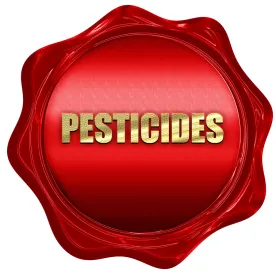EPA concluded in draft risk assessments that a widely used herbicide in the United States that controls weeds and grasses— glyphosate—is “not likely to be carcinogenic to humans.” Importantly, the assessment also “found no other meaningful risks to human health when the product is used according to the pesticide label.” According to EPA, this finding is consistent with the 2017 National Institute of Health Agricultural Health Survey as well as conclusions by science reviews in other countries.
Use of glyphosate dates back to the 1970s and glyphosate is undergoing Registration Review—which requires EPA review of registered pesticides every 15 years. The herbicide has been classified in multiple chemical categories since 1985. Initially classified as a Group C Chemical (Possible Human Carcinogen) due to the discovery of kidney tumors in male mice, the agency reclassified the herbicide in 1986 as a Group D Chemical (Not Classifiable as to Human Carcinogenicity) due to equivocal data. After additional peer review, in 1991, the agency classified glyphosate as a Group E Chemical (Evidence of Non-Carcinogenicity for Humans) based on studies of mice and rats. In 2015, the Cancer Assessment Review Committee reevaluated prior data and classified glyphosate as “Not Likely to be Carcinogenic to Humans.”
As discussed previously by this blog (“EPA: Research Shows Herbicide Glyphosate Unlikely to Cause Cancer” and “Glyphosate Litigation Primer”), there has been significant national and international debate surrounding the use of the herbicide. The International Agency for Research on Cancer, a subdivision of the World Health Organization (“WHO”), identified glyphosate as a probable carcinogen in March 2015. But, in November of that year, the European Food and Safety Authority concluded the herbicide was “unlikely to pose a carcinogenic hazard to humans.” Another subdivision of WHO reached a similar finding in 2016, concluding “glyphosate was unlikely to pose a carcinogenic risk to humans from exposure through the diet.” While some European countries have sought to ban the herbicide, other countries have stood behind the finding that glyphosate is unlikely to cause cancer in humans.
In light of this backdrop, EPA characterized its 2017 evaluation as a more comprehensive evaluation compared to its prior 2015 human health review. While the draft human health assessment finds the herbicide is unlikely to be carcinogenic to humans, EPA stated that the ecological risk assessment showed a “potential for effects on birds, mammals, and terrestrial and aquatic plants.”
The draft risk assessments and supporting documents are available on EPA’s website. EPA will receive public comments for 60 days following the publication in early 2018 of the draft risk assessments to the glyphosate registration review docket, EPA-HQ-OPP-2009-0361. EPA states that the agency will publish in 2019 the proposed interim registration review decision for glyphosate. If deemed necessary, that decision would identify any proposed mitigation measures to reduce risk.




 />i
/>i

